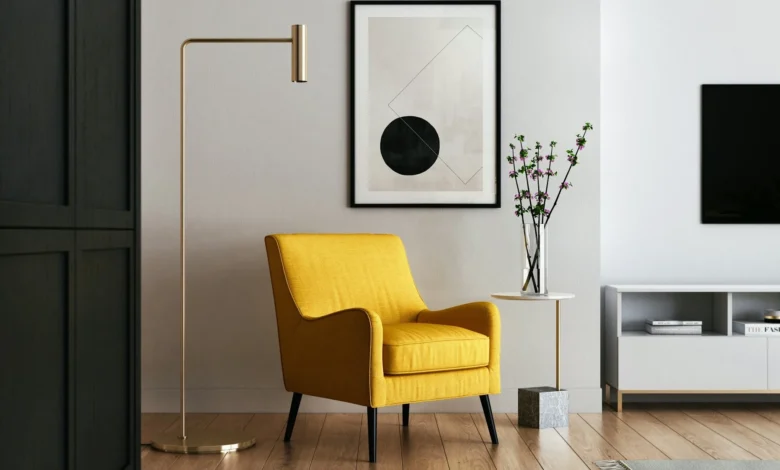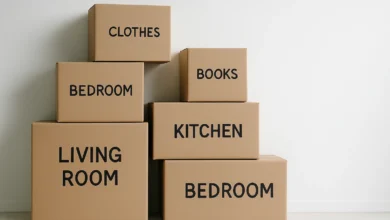
How to Add Accessibility to Your Home Without Losing Style or Comfort
Making your home more accessible doesn’t mean sacrificing style. With a thoughtful approach, you can design a space that’s inclusive, comfortable, and still full of personality.
Adapting your home for ageing, mobility needs, or future-proofing works best when practical features blend seamlessly with great design.
Here are some helpful ways that you can improve accessibility within your home while keeping the charm that makes your home in Liverpool feel like yours.
1. Make Entrances Welcoming and Practical
Your front door is the first impression of your home, so let’s make it both stylish and easy to use. Step-free access is a must, and if you’re adding a ramp, pick materials like timber, brick, or textured concrete that match your home’s look. You can keep things charming with decorative railings or some pretty planters along the way to keep that kerb appeal strong.
Look out for wider door frames and lever-style handles as they are much easier for everyone to use. Plus, lots of modern doors come with built-in smart locks and security features that blend technology with sleek design.
2. Rethink Flooring Choices
Flooring really sets the tone for both style and safety. Go for level, slip-resistant surfaces so no one trips up, and make sure there is a smooth flow between rooms. Wood, vinyl, or polished concrete all tick the boxes for looking good and being practical.
If you want to add a rug, keep it simple and safe. Choose ones with non-slip backing and a low profile to stop any trips or falls.
3. Use Lighting to Combine Safety and Style
Good lighting can make a huge difference, not just for safety but for the vibe too. Instead of just one harsh overhead light, layer things with ceiling fixtures, wall lights, and table lamps. This gives a warm, inviting feel while making sure everything is easy to see.
Motion-sensor or touch-activated lights near your front door, hallways, and bathrooms add a modern touch and make life easier. Warm LED lighting helps keep things cosy without losing functionality.
4. Install Accessible Bathrooms That Still Look Luxurious
You do not have to sacrifice style for accessibility in the bathroom. Walk-in showers with frameless glass look super sleek and make getting in and out simple. Pick grab rails in brushed gold, matte black, or chrome to match your taps and add a stylish touch.
A floating sink adds a modern look and leaves plenty of room underneath for wheelchair access. Non-slip tiles come in lots of gorgeous styles now, so you can keep things safe without losing that high-end feel.
5. Design a Kitchen That Works for Everyone
The kitchen is the heart of the home, so make it work for all abilities without losing style. Open-plan layouts with plenty of room to move around really help. Lower worktops or adjustable counters make cooking easier for wheelchair users, but still look great.
Pull-out larders, D-shaped handles, and soft-close drawers are perfect for accessibility and add a touch of luxury. Lever taps and induction hobs with controls at the front keep things safe and smart.
6. Choose Stylish and Supportive Furniture
Comfort and support go hand in hand. So, make sure to choose chairs and sofas with firm cushions, high backs, and armrests to make getting up easier. Plenty of brands now offer accessible furniture that does not compromise on style.
Arrange your furniture so there is plenty of space to walk around, which helps with mobility and gives your home a fresh, open feel.
7. Embrace Smart Home Technology
Smart tech makes life a whole lot easier. Voice-activated assistants can take care of your lighting, heating, curtains, and even kitchen appliances without you needing to move much. Look for smart thermostats and lighting that fit your style seamlessly.
Smart blinds and curtains mean no more tricky cords, which is safer and more convenient. Stylish, modern stairlifts and home lifts come in designs and colours that blend right into your home.
If you’re looking for trusted stairlift solutions in the area, stairlift services by Halton Stairlifts are a go-to option. They have built a strong reputation across the region for reliable service, with highly rated customer reviews on Trustpilot.
8. Add Visual Contrast Without Sacrificing Style
Visual contrast helps people with sight difficulties navigate more easily. Use contrasting colours between floors and walls, or on light switches and furniture.
You do not need bright, clashing colours. Muted tones or soft monochromes that complement each other can do the job beautifully while still standing out enough to be helpful.
9. Keep Outdoor Areas Accessible and Attractive
You don’t have to sacrifice style to make your garden or patio accessible. Think about level paths using pretty materials like decorative stone, wood decking, or textured pavers because not only do they look great, but they also give you a good grip underfoot.
Raised planters are a clever way to enjoy gardening without bending too much, and comfy seating with armrests means everyone can relax outside comfortably.
Adding good lighting and handrails doesn’t have to spoil the look either. Solar-powered lights or ones that blend into your landscaping can brighten things up without standing out. It’s all about making your outdoor space both beautiful and easy to use.
Add Style And Accessibility To Your Home in Liverpool
A well-designed home should be inclusive, comfortable, and visually pleasing. Adding accessibility features doesn’t mean giving up on style, but rather integrating thoughtful and practical elements that support all stages of life.
If you’re looking to create a home that’s as functional as it is fabulous, make sure to choose modern materials, clever layouts and beautiful finishes.







